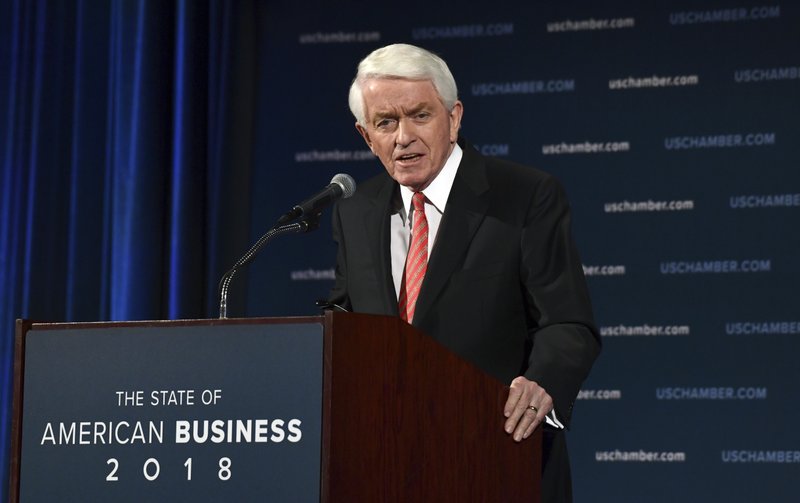WASHINGTON -- President Donald Trump is considering tariffs on imports from China, with an announcement possible as early as next week. And that has U.S. industry groups and some lawmakers scrambling in the face of a potential trade war that analysts say would reverberate across the U.S. economy.
Early indications from the White House have officials bracing for tariffs across a wide variety of consumer goods, from apparel to electronics, and even on imported parts for products made in the U.S. The size and scope of the tariffs remain under debate, but the U.S. Chamber of Commerce is warning that annual tariffs of as much as $60 billion on Chinese goods would be "devastating."
Trump's focus on China could be even more consequential, both at home and abroad, than the recently announced penalty tariffs on steel and aluminum. And amid the staff turmoil at the White House, it's being read as a sign of rising influence for the administration's populist economic aides, led by Commerce Secretary Wilbur Ross and adviser Peter Navarro.
Even Larry Kudlow -- an avowed free trader tapped to replace Gary Cohn as director of the White House National Economic Council -- has said China deserves a "tough response" from the United States and its friends. He told CNBC this week, "The United States could lead a coalition of large trading partners and allies against China."
But with these tariffs, the Trump administration appears so far to be content to go it alone.
Trump and his top trade advisers are readying a raft of actions to penalize China's theft of U.S. intellectual property, including tariffs on at least $30 billion of annual Chinese imports, people familiar with the discussions said.
The rapid pace of White House trade measures is no accident and comes at the president's request. At a White House meeting last week, Robert Lighthizer, U.S. trade representative, presented Trump with a plan to target $30 billion a year in Chinese imports.
[PRESIDENT TRUMP: Timeline, appointments, executive orders + guide to actions in first year]
That amount is equal to the cost that Lighthizer's office estimates Chinese policies aimed at acquiring U.S. technology impose on U.S. companies annually. In August, Lighthizer officially began an investigation into those practices, which include digital warfare, as well as requiring companies to hand over trade secrets and form joint ventures with Chinese partners to gain access to certain markets.
The administration is devising the measure to broadly counter a Chinese strategy known as the Made in China 2025 plan. China introduced a comprehensive initiative in 2015 to upgrade Chinese industry over the next decade.
The measures may also include investment restrictions, caps on visas for Chinese researchers and challenges to China's trade practices at the World Trade Organization. Those familiar with the planning cautioned that the timing could be delayed and that such measures are likely to be introduced in stages.
On Friday, the National Retail Federation, which recently hosted industry groups to organize opposition to another round of tariffs, convened a conference call to update its members.
"They're all concerned about this," said David French, vice president for government relations. "Tariffs are a tax on consumers, and they're best used sparingly as tools."
Trade experts and economists say the tariffs could lead to rising prices for U.S. consumers and businesses without accomplishing one of the president's stated goals: reducing last year's trade imbalance of $566 billion.
China, the largest source of the trade imbalance, would likely respond to any tariffs by retaliating with higher import taxes on U.S. goods, among other possible restrictions.
"They signaled that they will aim at things that affect the United States politically as well as economically," said Claude Barfield, a scholar at the conservative American Enterprise Institute and former consultant with the U.S. trade representative.
Lawmakers on Capitol Hill, who have largely been shut out of administration deliberations, fear that tariffs would stunt economic benefits in the U.S. that could stem from the GOP tax cuts.
Republicans in Congress largely opposed Trump's steel and aluminum tariffs and are working with the administration on a process for allowing waivers or carve-outs for certain countries or types of metals, beyond the exemption the White House is allowing for Canada and Mexico.
Information for this article was contributed by Ken Thomas and Lorne Cook of The Associated Press; and by Ana Swanson of The New York Times.
Business on 03/17/2018
